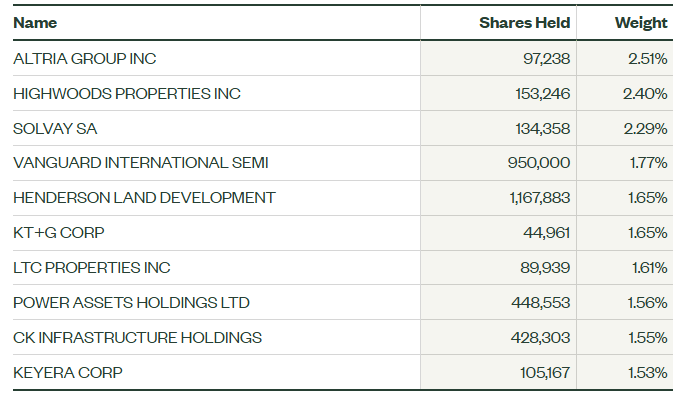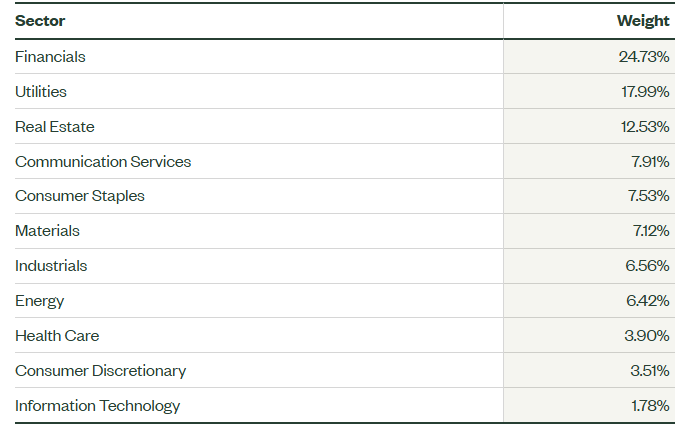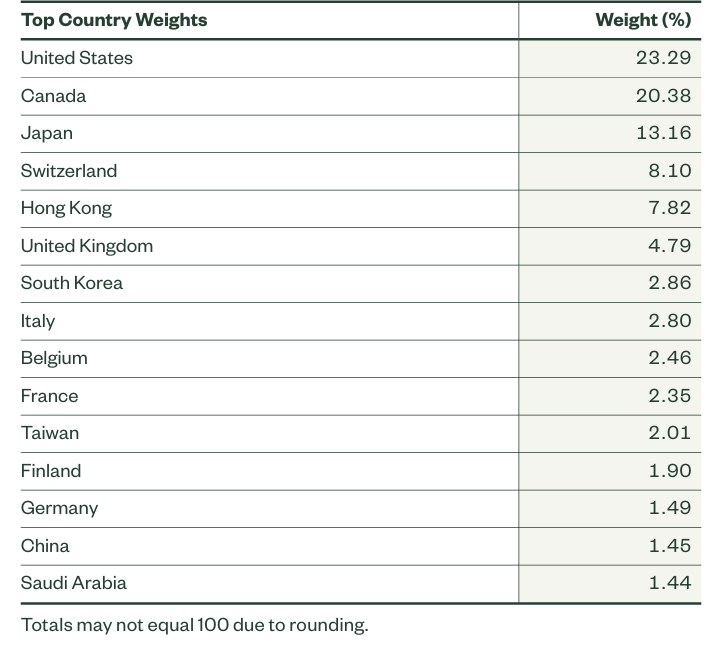Dividend investing comes in and out of favor depending on where we are in the market cycle. Typically, investors prefer capital appreciation to dividends when in a strong upswing for beta. But when there are concerns of that not lasting much longer, typically blue chip dividend paying names get more attention as high-flyers take a back seat. If you believe the cycle is about to turn in favor of dividend investing broadly, and also like having global stock market exposure, then you may want to consider the SPDR® S&P Global Dividend ETF (NYSEARCA:WDIV). This is a passively managed exchange-traded fund, or ETF, that tracks an index designed to give investors exposure to a portfolio of the top dividend-paying international stocks.
The idea here is to get access to high-yield companies that have increased – or at least maintained – their dividends for at least 10 years. The S&P Global Dividend Aristocrats Index, which is the benchmark for WDIV, is a rules-based index composed of dividend-paying securities in the S&P Global BMI, of which there are 2,300 companies in 42 developed and emerging markets countries. To become a member of the index, a company must satisfy three requirements: it’s a large company, it’s in the S&P Global BMI (Broad Market Index), and it has a good track record in paying increasing dividends.
A Look At The Holdings
WDIV’s portfolio is a diverse group of companies across Industrials, Utilities, Telecoms and more, all from different countries, and only united in that they have proven themselves able to return money to shareholders via steady dividend payments. No stock makes up more than 2.51% of the portfolio, with the top 10 holdings fairly well diversified.
ssga.com
What do these companies do? Altria Group is the US leader in tobacco and a mainstay of many diversified dividend portfolios that focus on dividend growth. Highwoods Properties Inc. is a real estate investment trust (REIT) which owns and operates office properties in several markets across the US. Solvay SA is a Belgian chemical company focused on advanced materials and specialty chemicals. Vanguard International Semiconductor Corporation is a Taiwanese semiconductor firm. And Henderson Land Development Company Limited is a Hong Kong-based property development and investment company with a footprint in various parts of Asia.
These top holdings illustrate the fund’s global positioning, and show that virtually no sector or geography is off-limits, so long as the companies fit the dividend criteria.
Sector Composition
As is typically the case with international and dividend focused funds, the top sector of Financials here are at nearly 25% of the fund, Utilities come in 2nd at 18%, and Real Estate rounds off the top 3 at 12.5%.
ssga.com
I actually very much like the mix here, especially when it comes to the Utilities sector, which I am quite bullish on, not just for the dividend component but for global AI electricity demands that must be powered. Good mix overall here.
As to the country allocation, the US makes up the largest allocation at 23%, followed by Canada and Japan. Again — nice mix here that is well spread out across the globe.
ssga.com
Peer Comparison
There are numerous other funds that get exposure to international dividend plays. One fund worth comparing against, is the Vanguard International High Dividend Yield ETF (VYMI). When we look at the price ratio of WDIV to VYMI, we find that WDIV has underperformed, but more recently has shown some relative strength.
stockcharts.com
Much of this is due to VYMI, NOT having US exposure, with Japan in that fund (which has done quite well) being the largest allocation. Dividend paying stocks in the US have had to compete with the Fed hiking rates, which explains why WDIV has lagged so much. That is likely about to change as the Fed enters a cutting cycle, though.
Pros and Cons
There are a few notable advantages to investing in the fund. The first is the broad diversification. With WDIV you’re getting dividend paying companies from across the globe without any meaningful concentration risk. With a 30-Day SEC Yield of 4.55% and upside potential, WDIV looks like not just a great diversifier against a core S&P 500 position in a portfolio, but perhaps it could be an outright replacement as a core holding. Combined with the fact that dividends are perceived to have stability, it can make a lot of sense to allocate to here at this point in the cycle.
However, investors should also consider the potential drawbacks and risks associated with investing in WDIV. The main one? Currency fluctuations. As an international fund, WDIV is exposed to daily fluctuations in foreign exchange rates, which may adversely affect performance relative to the returns of domestic-only positions. In addition, dividends are not guaranteed. There are always risks that companies cut dividends, impacting the overall yield of the portfolio. Not as big of an issue given the broad diversification, but still worth considering.
Conclusion
With a nice yield, strong sector diversification, and well-balanced global diversification, I really do think this is a great fund. While it clearly has lagged against the US, I think the go-forward returns can look pretty good on a relative basis. I think it’s worth considering if you’re looking for income, upside appreciation, and a more balanced global outlook.
Read the full article here
